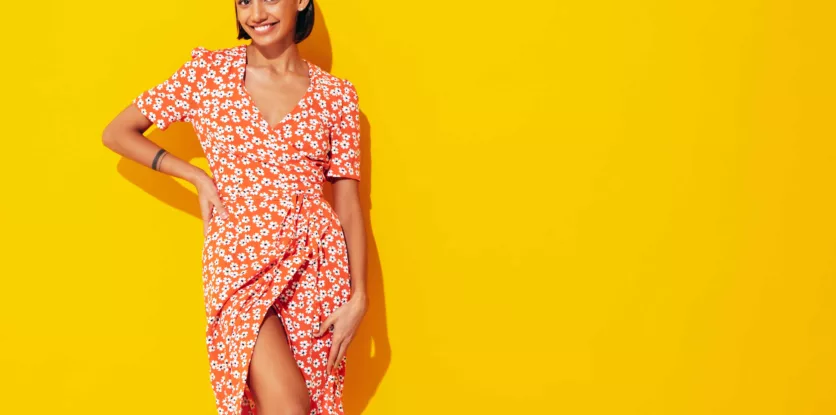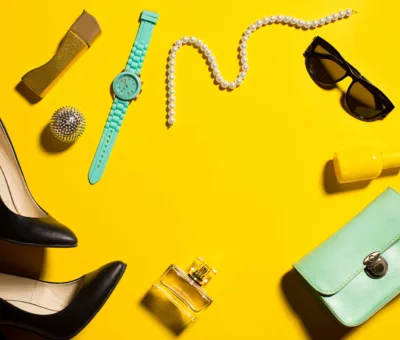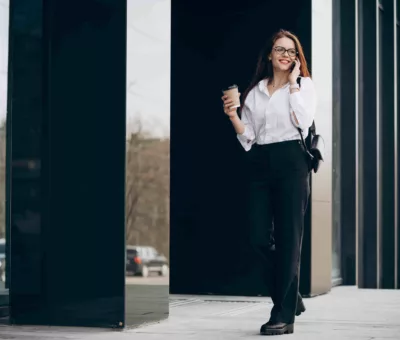The correct pairing of prints and patterns can elevate an ensemble and create a visually stunning appearance. However, it is also simple to overdo things and create a chaotic, perplexing jumble. This section will reveal the techniques for combining motifs and patterns.
Begin with a strong foundation.
Begin with a foundation of neutral colors or basic, substantial elements. For instance, if you are wearing a skirt with a pattern, you could combine it with a plain white blouse or a black turtleneck. This will prevent your ensemble from appearing too busy by balancing out the prints.
Adhere to a color scheme.
When combining and matching prints and patterns, it is essential to adhere to a unified colour scheme. Choose two or three complementary hues and incorporate them into your ensemble.
Combine prints of varying scales.
To create a visually fascinating ensemble, combine prints of varying sizes. Pair a small polka-dot blouse with a larger floral skirt, for instance. This creates an attractive contrast between the two prints and adds dimension to your ensemble.
Mixing and matching patterns and prints
Mixing and matching designs and patterns is a creative way to create distinctive and eye-catching ensembles. Nonetheless, it can be one of the most difficult tasks to get right. This section will discuss the dos and don’ts of combining prints and patterns:
Begin with a neutral foundation
When learning how to combine patterns and designs in clothing, it is essential to begin with a neutral base. So, what color combinations work? A neutral foundation can be a solid-coloured top or bottom, as well as a neutral-colored handbag or shoes.
Combine prints of varying scales
Mixing prints of various dimensions is a fashion tip for successfully mixing and matching prints and patterns. This involves coupling smaller and larger prints to create visual contrast and interest.
Try different textures.
Combine a silk camisole with a tweed skirt or a velvet jacket with a cotton shirt. This will add dimension to your ensemble and make it more visually fascinating.
You can be dressed out of the way:
One of the most difficult aspects of mixing and matching motifs and patterns with clothing is ensuring that your ensemble does not resemble a circus. Here are some strategies for ensuring that your outfit does not resemble a circus:
Choose no more than two or three complementary colors to adhere to the color scheme. Include them in your ensemble for coordinated apparel colors.
Use neutral colors to create classic pattern combinations by balancing the designs with neutral hues. This will prevent you from appearing overly occupied.
This creates a pleasant contrast between the two prints and adds depth to your ensemble.
Avoid mixing too many patterns at once: No more than three designs should be worn in a single ensemble, and they should all complement one another.
Choose accessories in the same colour family as your prints, or choose a neutral accessory, such as a black or beige satchel, to complete your ensemble.
Guidelines for Mastering the Art of Pattern Mixing
Understanding the function of textures and patterns and employing them effectively can help you conquer the art of pattern blending. Here are some wardrobe ideas for mixing prints and patterns:
Geometric patterns such as gingham, polka dots, and stripes are excellent for achieving balance and serving as a solid foundation.
Floral or movement patterns, such as zebra stripes, watercolor, tie-dye, and jungle-inspired designs, can be used as statement pieces and serve as the outfit’s anchor. Animal motifs are also considered substantial and neutral. These are excellent ensemble suggestions for wearing multiple designs together.
Patterns of differing sizes can produce a sense of balance in an ensemble. Even though solids are not as thrilling as prints, they can be used to break up a busy ensemble.
Accessories, footwear, and outerwear can also unite disparate patterns by establishing a common thread.
It is essential to remember that some textures can function as patterns, such as a sweater with a wide weave that appears to be patterned from a distance. In this instance, the textured item should be considered a patterned piece.
Creating Your Signature Look with Mixed Patterns and Colors
Here are some guidelines for creating a personal style with a combination of patterns and hues:
Begin with a primary hue: Choose a fundamental hue you adore and construct your ensemble around it. This will help you create a unified appearance by tying together all the patterns and colors.
Combine patterns and hues in varying proportions: Experiment with combining patterns and colors in varying proportions to create a distinctive and harmonious appearance. For instance, try pairing a blouse with a bold pattern with solid-coloured trousers, or a scarf with a colorful, eye-catching blazer.
Patterns and colors can be layered to add depth and visual interest to an ensemble. For instance, pair a plaid shirt with a polka-dot blouse or a floral skirt with a patterned cardigan.
Mixing and matching patterns and colors is all about violating the conventions and developing your own personal style. Don’t be afraid to combine patterns and colors you adore, so long as they complement one another.
Personalize your ensemble with statement jewellery, a vibrant lip color, or a one-of-a-kind purse, for example. This will allow you to express your personal style and make your ensemble your own.
Conclusion
Print and pattern mixing is an enjoyable and exciting method to add variety to one’s wardrobe.





Leave a Reply